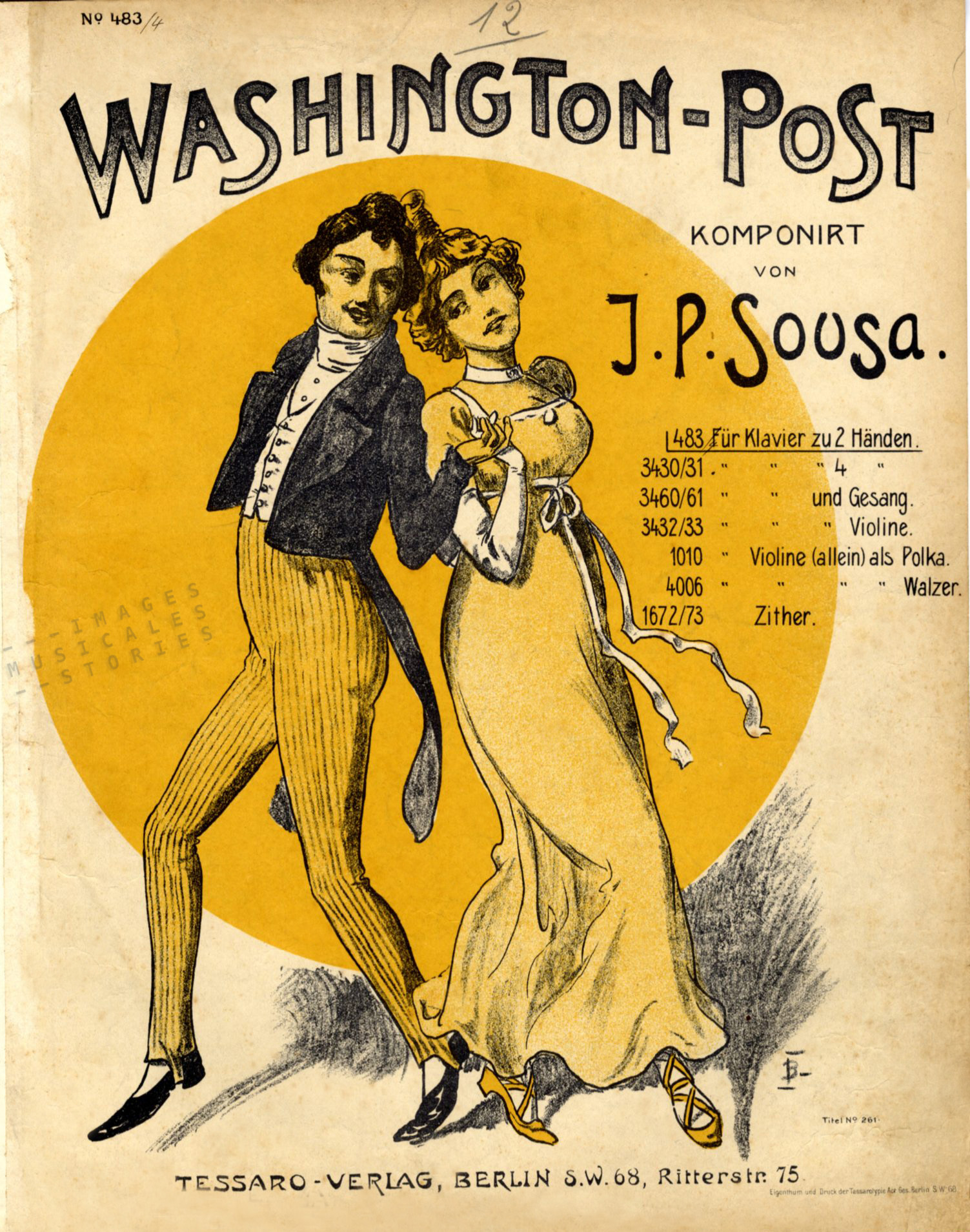
I am not a lover of national hymns, military music or marches. They might hearten the troops but they seldom encourage the creation of attractive covers. At least one exception is this winsome image for John Philip Sousa’s The Washington Post. It inspires gallant courteousness and good manners, not blaring heroism. And indeed Sousa’s fierce marching music suitably accompanied the stylish ballroom two-step. At one point the two-step was so much identified with Sousa’s melody that it was often called The Washington Post. Nevertheless we find distinct entries for the two dances in a tiny ‘dance class’ notebook of that time.
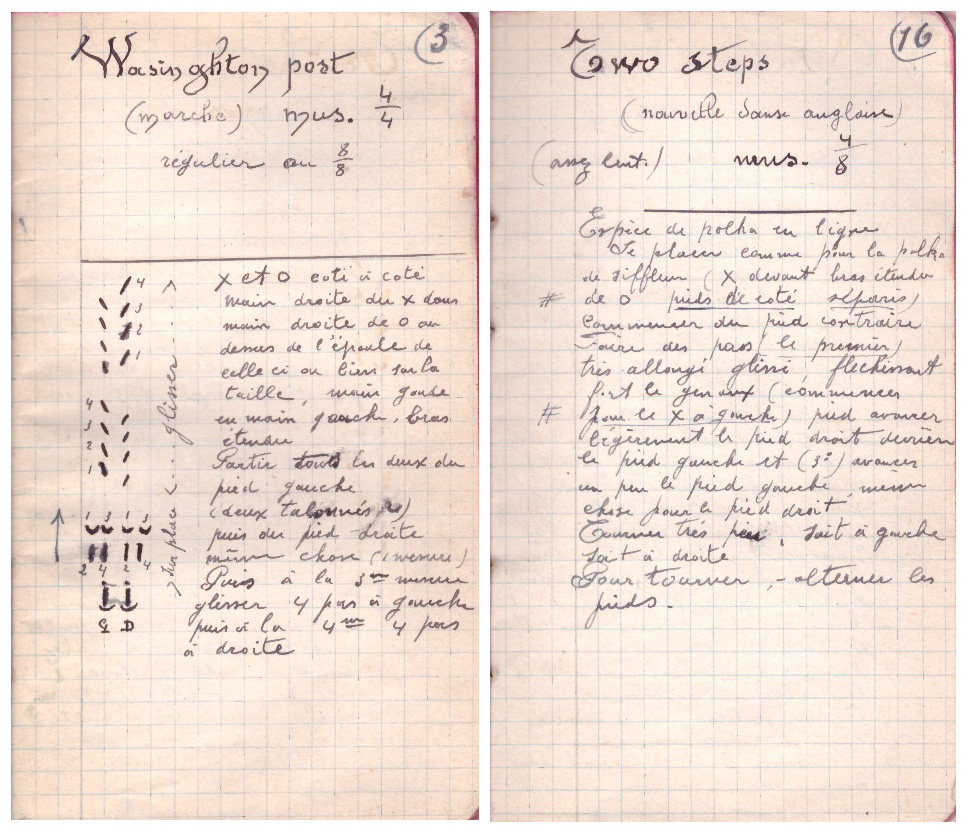
The two-step dance had been introduced in about 1890: a quick-quick-slow slide instead of the half-jump Polka step or an ein-zwei martial stride. The civilised dance definitely called for a more sophisticated music. Don’t take my word for it — listen to the delicate rendition of The Washington Post by the United States Army Field Band.
The creator of the dancing couple on the cover above is Johann Bahr (1859–1910), a German painter and caricaturist for the satirical magazine Lustige Blätter. We found one of his drawings for that magazine (a mocking self-portrait?) and also a merry carnivalesque aquarelle.
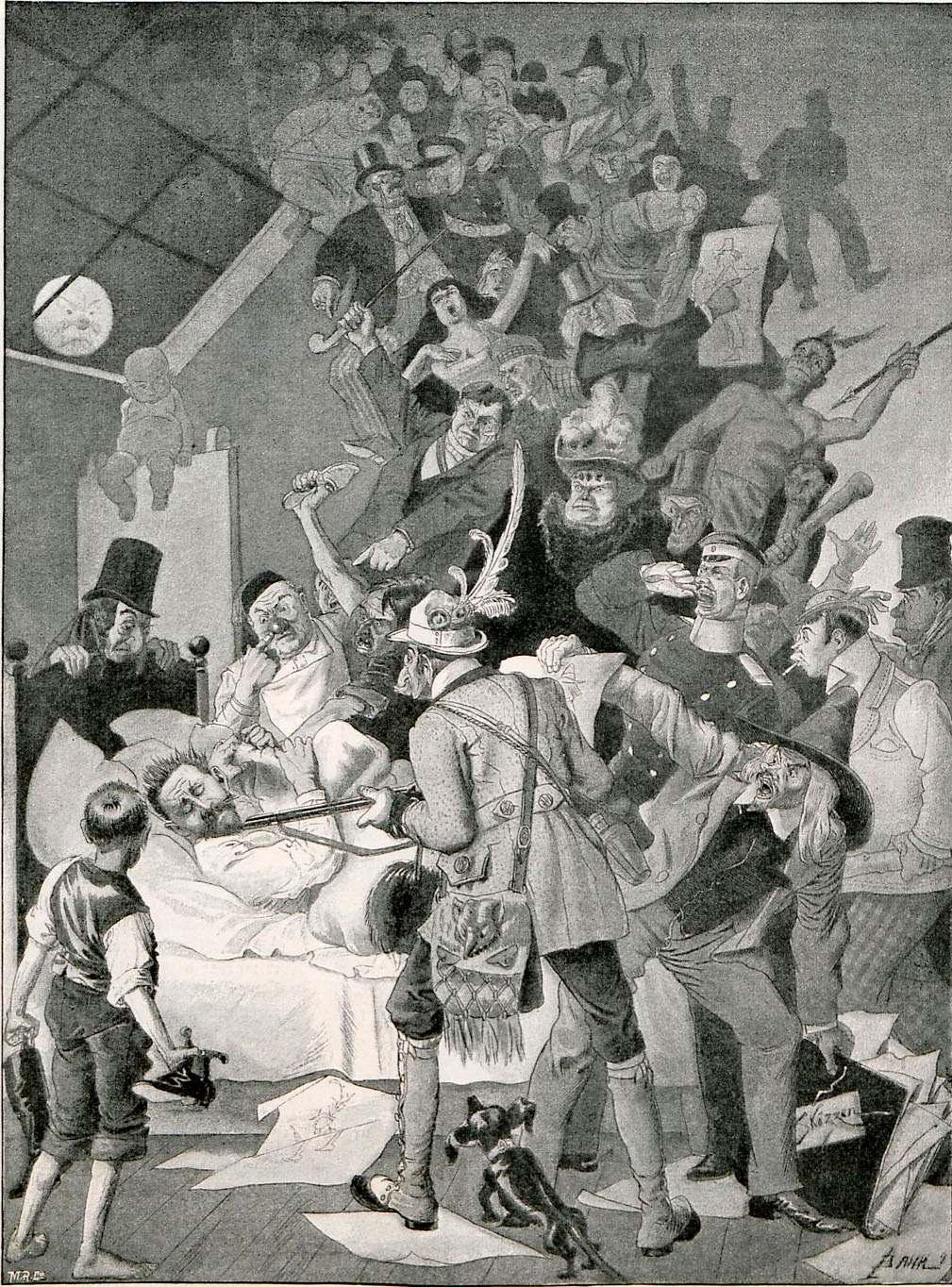
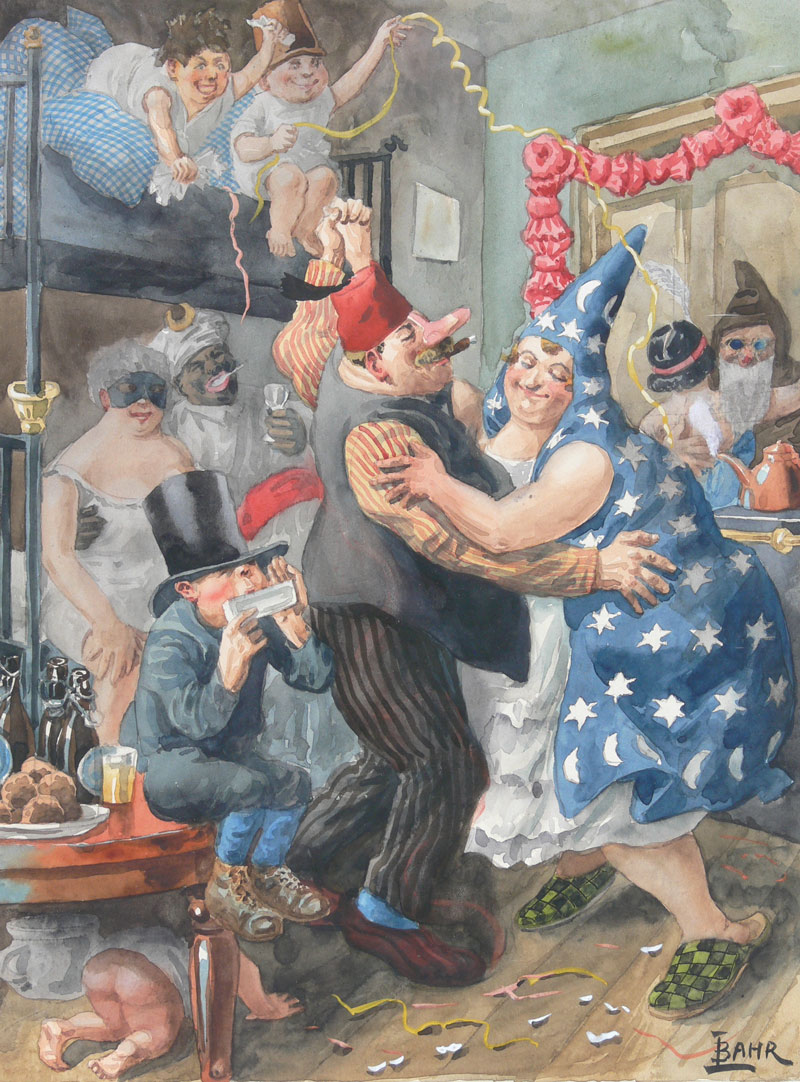
Bahr was not a prolific sheet music illustrator, still we count seven of his creations in our collection. One of them is again for a Sousa composition, the Kadetten-Marsch.
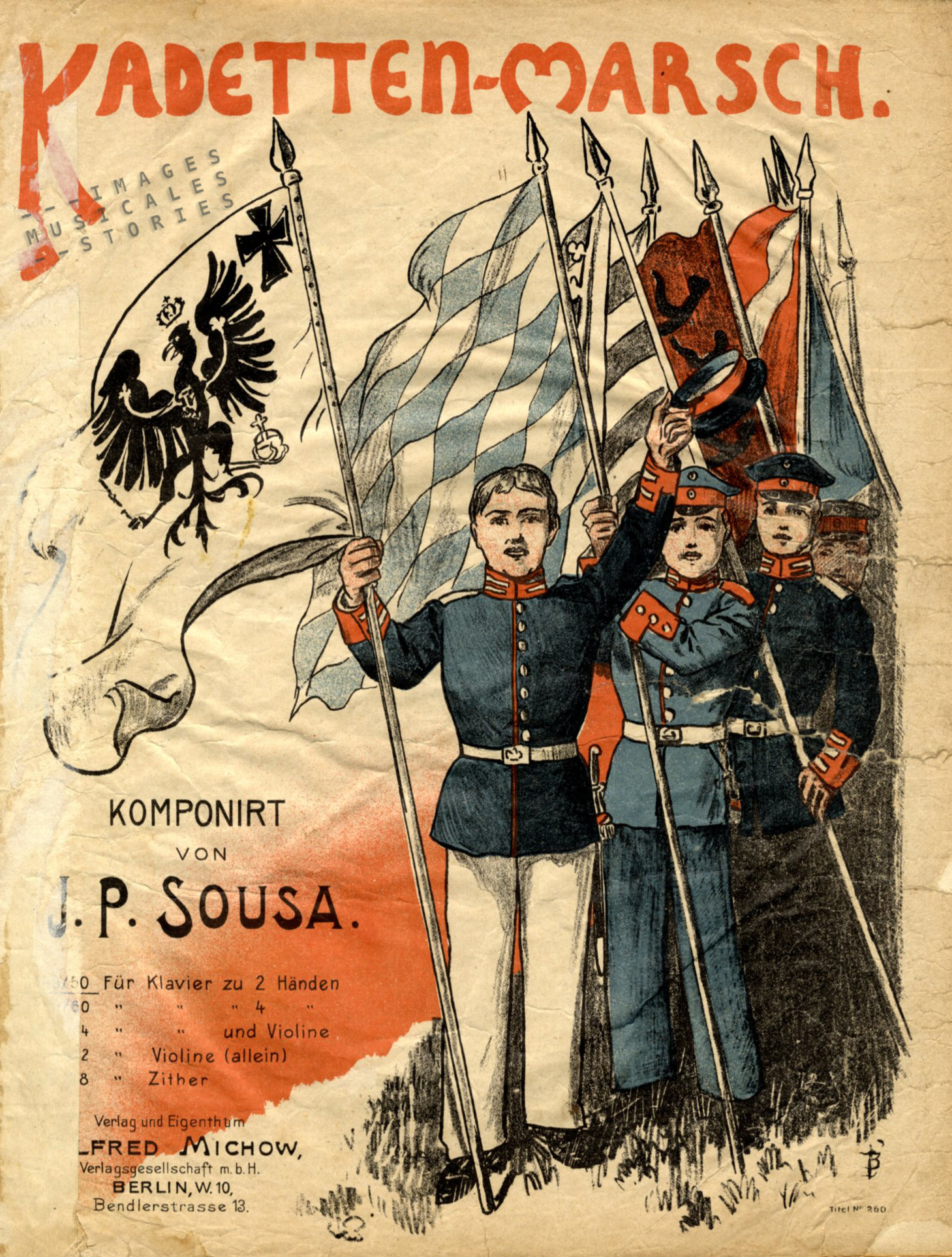
Now John Philip Sousa, he was famous! Born in Washington, D.C. in 1854 he would forever be esteemed as the American ‘March King’. His father was a Spanish trombonist with Portuguese roots, his mother was German. Sousa started as an apprentice musician at the Marine Corps. He would become a member and later the youngest conductor of the United States Marine Band. At the end of that career, in 1892 he founded his own Sousa Band. With it he conquered the US and the world, touring multiple times.
Sousa made his mark on music history. Being a perfectionist —and also having a perfect pitch— he attracted the finest musicians in his band. He educated audiences by playing classics to perfection, and proved that America had quality music.
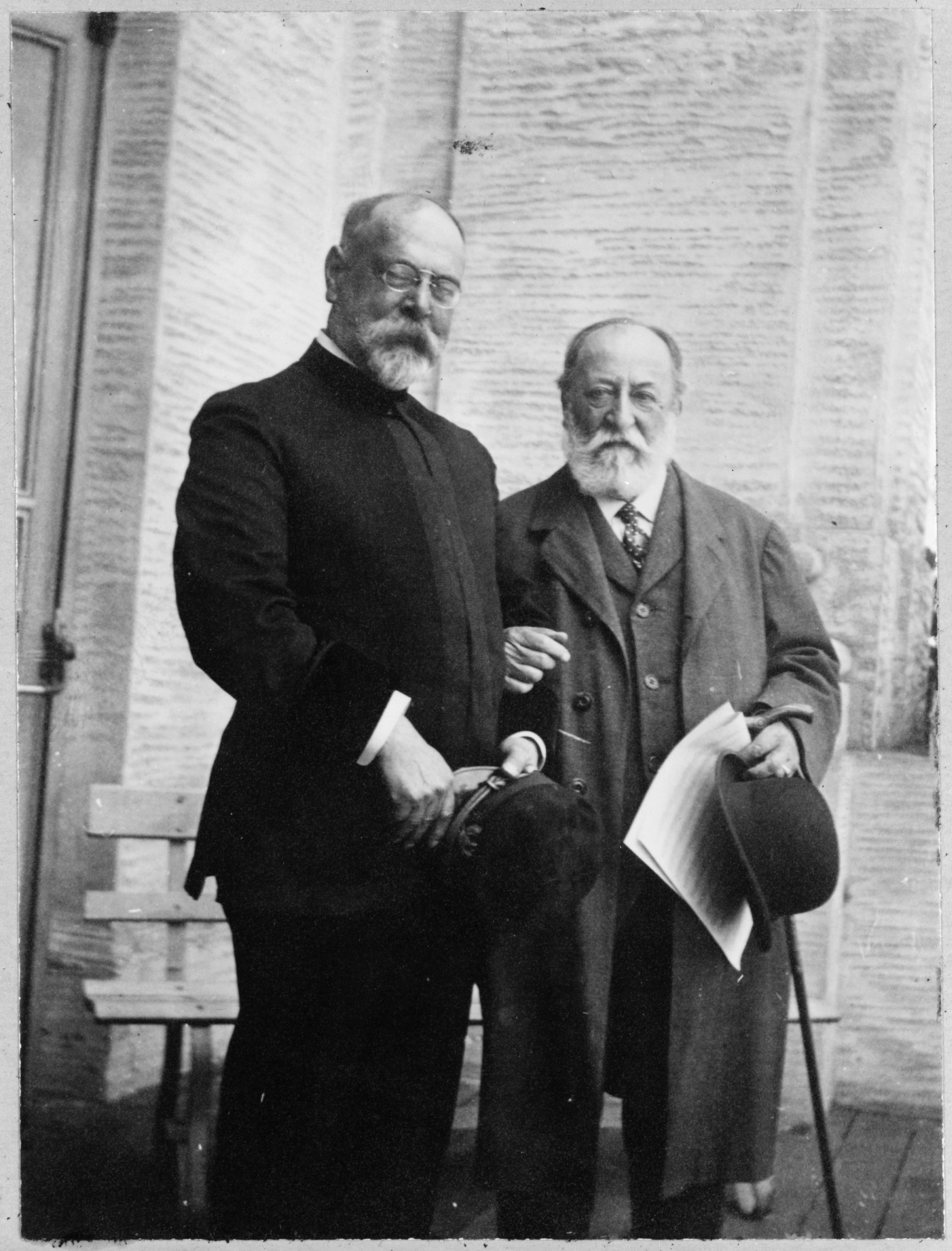
![Sousa at his favourite sport, trapshooting in 1916. { source: Pennsylvania State Sportsmen's Association ]](http://blog.imagesmusicales.be/wp-content/uploads/2016/11/sousa-6-10-1916-philly.jpg)
![John Philip Sousa, the Sousa, the "March King". [ ]](http://blog.imagesmusicales.be/wp-content/uploads/2016/11/Sousa.jpg)
In 1876, as a young lad of 22, Sousa toured as the orchestra leader for the Living Pictures. For that show he also composed short descriptive pieces as accompaniment to scenes with barely-covered girls. The Living Pictures was a series of tableaux vivants that enlivened scenes of classical art and literature. Beautiful women in gauze scarves and flesh-coloured tights took artful poses in painted decors. In the shows announcement, the public was reassured: “The management begs to state that the entertainment will be strictly first-class in every respect, and nothing will be said or done that will offend the most fastidious.”
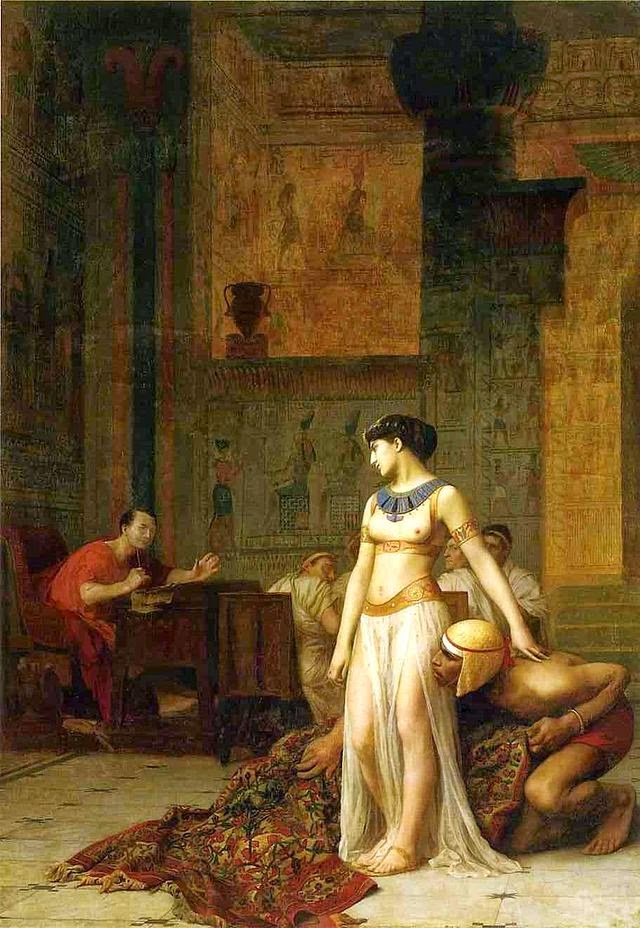
The show was an entertaining enterprise of Matt Morgan. He was a British caricaturist, scene painter and theatre personality who defied the authorities and moral standards. It is said that his cartoons ‘… attacked the impropriety —actual or rumoured— of the Prince of Wales; and most shockingly, of Queen Victoria herself.‘
![Photograph of Matt Morgan (1837-1890) [ source : Billy Rose Theatre Division, The New York Public Library. ]. On the right an article](http://blog.imagesmusicales.be/wp-content/uploads/2016/11/Matt-Morgan_nypl.digitalcollections.510d47de-a0da-a3d9-e040-e00a18064a99.001.w-copy-PS-article.jpg)
To close our post, here is a surprising demo. If you believe the sousaphone to be a boring ceremonial instrument, then think again!
Readings on Matt Morgan:
- ‘Sex, Art, and the Victorian Cartoonist: Matthew Somerville Morgan in Victorian Britain and America’, Richard Scully, IJOCA, 2011 (www.academia.eu)
- Matt Morgan on Broadway, blog
- Matt Morgan of FUN – Yesterday’s Papers (blog)
